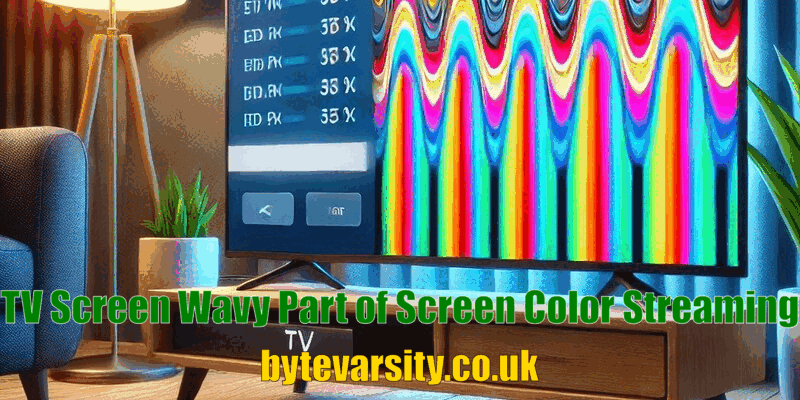Understanding the Problem
Streaming your favorite shows or movies only to face a wavy, color-distorted section on your TV screen can be incredibly frustrating. This issue is more common than you might think and often leaves viewers puzzled about what’s causing it. But don’t worry—most of the time, it’s fixable without much hassle.
The wavy screen and distorted colors can result from a variety of causes, including signal interference, faulty cables, or even internal hardware issues. Sometimes, the problem lies in your streaming device or internet connection rather than the TV itself. By understanding the potential culprits and their solutions, you’ll be better equipped to tackle the issue and get back to enjoying your entertainment.
Causes of Wavy Screens and Color Distortion
1. Signal Interference and Poor Connectivity
One of the most common causes of a wavy or distorted TV screen is signal interference. If you’re streaming wirelessly, a weak or unstable Wi-Fi signal might be disrupting the video feed. Other electronic devices, walls, or neighboring Wi-Fi networks can also interfere, leading to an unstable connection and poor image quality.
This issue is particularly noticeable when streaming high-definition or 4K content, which demands more bandwidth. When the signal transmission is interrupted, the TV may display wavy lines or distorted colors, even if the TV itself is functioning properly.
2. Faulty HDMI or AV Cables
Another likely culprit is faulty cables. HDMI or AV cables that are damaged, loose, or of poor quality can cause image disruptions. Over time, wear and tear on cables can degrade the signal being transmitted from your device to your TV, resulting in wavy visuals or color glitches.
Simply checking and replacing your cables can often resolve the issue. Loose connections or outdated cables are common problems that can be fixed with minimal effort.

Fixes for Wavy Screen Issues
1. Strengthen Your Wi-Fi Connection
If poor connectivity is the cause, optimizing your Wi-Fi setup can make a significant difference. Move your router closer to your TV or remove physical obstacles like walls that block the signal. Upgrading to a modern, high-performance router can also improve streaming quality, especially if you’re watching HD or 4K content.
In some cases, using an Ethernet cable instead of relying on Wi-Fi can eliminate connectivity issues entirely, providing a stable and uninterrupted signal for streaming.
2. Replace Faulty Cables
Worn or low-quality cables often lead to visual disruptions. Replace any damaged HDMI or AV cables with certified, high-speed versions designed for the resolution you’re streaming, such as HDMI 2.0 for 4K content. Ensuring that connections are tight and secure can also prevent recurring problems.
3. Adjust TV Settings
If connectivity and cable fixes don’t work, tweaking your TV settings may help. Many TVs offer display settings like “Picture Mode” or motion smoothing features that can sometimes interfere with streaming quality. Resetting these settings to their default state or turning off unnecessary processing features can resolve image distortion.
4. Address Hardware Problems
When all else fails, the issue might stem from the TV’s hardware, such as a malfunctioning graphics processor or display panel. In such cases, contacting the manufacturer or seeking professional repair services may be necessary. If your TV is still under warranty, the manufacturer may offer repairs or replacements.
Conclusion
Dealing with a wavy or color-distorted TV screen can be annoying, but most issues are manageable with some troubleshooting. Start by checking your internet connection and cables, then move on to adjusting your TV settings if needed. If the problem persists, it’s worth seeking professional help to address potential hardware issues. With the right approach, you’ll have your TV back in perfect working order in no time.